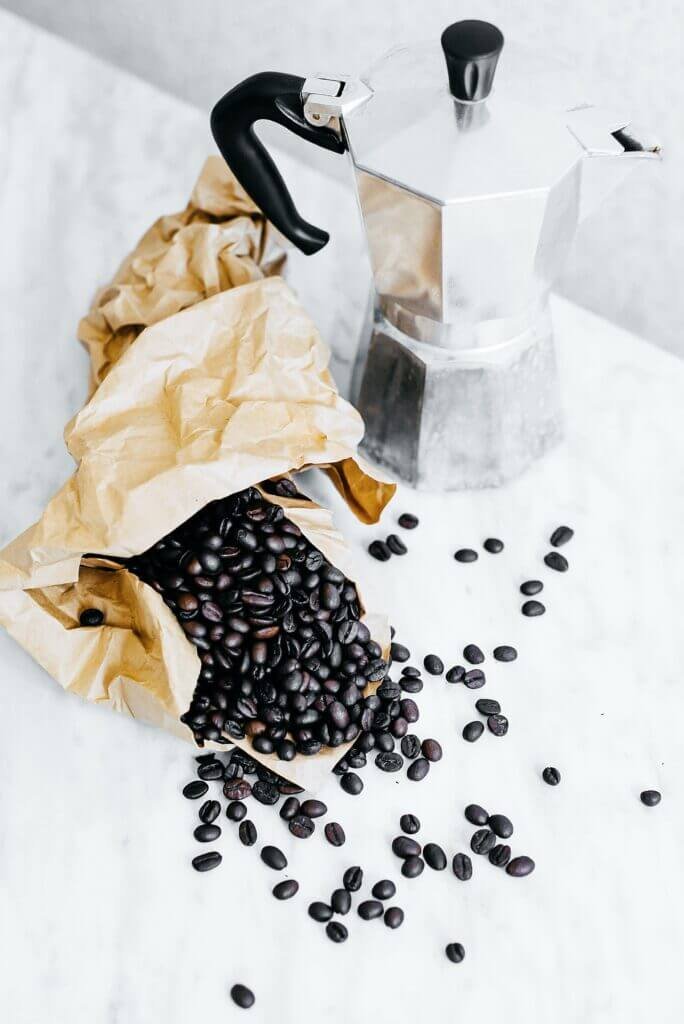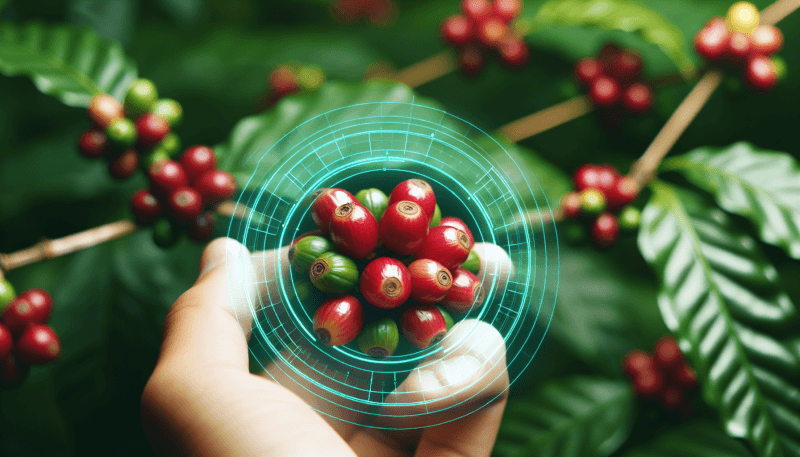Are you a coffee lover who is always looking for the best quality beans? If so, you might find yourself wondering, which coffee species produces the best quality coffee? With so many varieties available, it can be difficult to determine which one is superior in taste and aroma. In this article, we will explore the different coffee species and their unique characteristics, helping you make an informed choice when it comes to selecting your next cup of joe. Whether you prefer the bold and rich flavors of Arabica or the intense and robust taste of Robusta, we’ve got you covered.
Arabica Coffee
Overview
Arabica coffee is widely regarded as one of the most superior coffee species due to its exquisite flavor and complex aroma. It is cultivated in various regions around the world, including Latin America, Africa, and Asia. Arabica coffee beans are oval-shaped with a slightly curved line down the middle, commonly referred to as the “coffee bean’s face.”
Flavor Profile
Arabica coffee possesses a wide range of flavors, making it highly versatile and appealing to coffee connoisseurs. Its taste can be described as smooth, with pleasant acidity and a hint of sweetness. One may notice delicate notes of chocolate, fruit, nuts, floral tones, and even caramel in Arabica coffee. This rich flavor profile is what sets Arabica coffee apart from other species.
Growing Conditions
Arabica coffee thrives in specific growing conditions, typically at altitudes ranging between 2,000 to 6,000 feet. It requires a mild climate with temperatures between 60°F and 70°F, along with well-distributed rainfall throughout the year. Arabica coffee plants are shade-tolerant, which is why they are often found under the canopy of other trees in coffee farms.
Processing Methods
After harvesting, Arabica coffee cherries undergo various processing methods to unlock their flavors. The “washed” method involves removing the outer skin of the cherries, fermenting them, and then rinsing off the remaining mucilage. This method results in a cleaner and more acidic cup of coffee. Additionally, the “natural” or “dry” method involves sun-drying the cherries with the pulp intact, allowing the bean to absorb flavors from the fruit. This method often produces a sweeter and fuller-bodied coffee.
Robusta Coffee
Overview
Robusta coffee, as the name suggests, is known for its robust and strong flavor. It is primarily cultivated in Asia, Africa, and parts of Brazil. The coffee beans of the Robusta species are rounder and smaller than Arabica beans. They have a straight line in the middle, commonly referred to as the “coffee bean’s back.”
Flavor Profile
Robusta coffee is famous for its high caffeine content and intense flavor profile. It often boasts a bold, full-bodied character with earthy and nutty undertones. The taste tends to be less nuanced compared to Arabica coffee, but Robusta is highly appreciated for its ability to provide a strong caffeine kick.
Growing Conditions
Robusta coffee grows in regions characterized by warmer climates, with temperatures ranging between 75°F to 85°F. It can thrive at lower altitudes compared to Arabica coffee, from sea level up to 2,000 feet. Robusta plants require a significant amount of rainfall, especially during the flowering and fruiting stages.
Processing Methods
The processing methods for Robusta coffee are similar to those used for Arabica coffee. However, due to its higher caffeine content, Robusta beans are often subjected to the “wet polishing” method. This method involves removing the silver skin of the beans through mechanical polishing, resulting in a cleaner appearance. The wet polishing process aims to reduce the bitterness and enhance the overall flavor of Robusta coffee.

Liberica Coffee
Overview
Liberica coffee is a lesser-known species that originated in Liberia, West Africa. It is cultivated in smaller quantities compared to Arabica and Robusta coffee and is primarily found in the Philippines, Malaysia, and parts of Indonesia. Liberica coffee beans are large and asymmetrical, with an uneven surface.
Flavor Profile
Liberica coffee offers a distinct and unique flavor profile that sets it apart from other coffee species. It is often described as having a full-bodied taste with a woody and smoky undertone. The flavor of Liberica coffee is bold and can sometimes be described as having a hint of floral or fruity notes.
Growing Conditions
Liberica coffee requires a hot and humid climate to thrive and is typically grown at lower altitudes compared to Arabica and Robusta coffee. It can withstand high temperatures ranging from 75°F to 95°F and is less sensitive to fluctuations in weather conditions. Liberica plants also require a substantial amount of rainfall throughout the year for optimal growth.
Processing Methods
The processing methods for Liberica coffee are similar to those used for Arabica and Robusta coffee. The cherries can be either washed or dried naturally. However, due to its limited production and availability, Liberica coffee is often processed using traditional methods, such as sun-drying the cherries on raised beds or patios. These traditional processing methods contribute to the distinct flavor and character of Liberica coffee.
Excelsa Coffee
Overview
Excelsa coffee is a species closely related to Liberica and is native to Southeast Asia. It is often blended with other coffee species to add complexity to the final cup. Excelsa coffee beans are elongated and have two flat sides, resembling the shape of rice grains.
Flavor Profile
Excelsa coffee offers a unique flavor profile that combines the characteristics of both dark and light roasted coffees. It is often described as having a tart and fruity taste with a subtle smokiness. Excelsa coffee adds a distinct and vibrant note to coffee blends, making it a popular choice for enhancing the flavor profile.
Growing Conditions
Excelsa coffee thrives in regions with warm and tropical climates. It requires a temperature range between 75°F to 85°F for optimal growth. Similar to Liberica coffee, Excelsa plants can withstand fluctuating weather conditions and are less susceptible to diseases. They are often found growing in areas with well-drained soil and receive a substantial amount of rainfall.
Processing Methods
The processing methods for Excelsa coffee are similar to those used for other coffee species. The cherries can be processed either by washing or drying naturally. The chosen method depends on the desired flavor profile and the preferences of the coffee producers. Excelsa coffee beans can contribute to enhancing the overall complexity of coffee blends due to their unique flavor characteristics.

Geisha Coffee
Overview
Geisha coffee, also known as Gesha coffee, is a highly sought-after and renowned coffee variety that originated in Ethiopia. It gained popularity after being introduced to Panama in the 20th century. Geisha coffee beans are elongated and have a distinct, star-like shape.
Flavor Profile
Geisha coffee is celebrated for its exceptional flavor profile, which often includes delicate and tea-like notes. It is known for its aromatic qualities and can showcase a range of flavors, including floral, citrus, and tropical fruit notes. The taste profile of Geisha coffee is often described as complex, elegant, and highly nuanced.
Growing Conditions
Geisha coffee thrives in high-altitude environments, typically between 4,000 to 6,000 feet above sea level. It requires cooler temperatures compared to other coffee species, with the range being around 60°F to 70°F. Geisha plants are often grown on shaded slopes, which provide protection from direct sunlight and encourage slow maturation, allowing for the development of its unique flavors.
Processing Methods
The processing methods for Geisha coffee can vary depending on the desired flavor profile and the region where it is cultivated. Common methods include both washed and natural processes. Some producers may opt for extended fermentation processes or variations like “honey processing.” These methods aim to enhance the vibrant characteristics of Geisha coffee and unlock its full potential.
Bourbon Coffee
Overview
Bourbon coffee, named after the Island of Bourbon (now Réunion Island), is a variety derived from the Arabica coffee species. It is mainly grown in Latin America and Eastern Africa. Bourbon coffee beans are typically small and round with a deep groove.
Flavor Profile
Bourbon coffee is highly regarded for its balanced and sweet flavor profile. It often exhibits notes of caramel, brown sugar, and chocolate. The taste is smooth and rounded, with a mild acidity. Bourbon coffee possesses a pleasant and inviting aroma that adds to its overall appeal.
Growing Conditions
Bourbon coffee prefers cooler climates and higher altitudes ranging from 2,000 to 6,000 feet. It requires a moderate rainfall pattern and well-drained soil. The regions where Bourbon coffee is grown often experience a distinct dry and wet season, allowing the cherries to mature at a slower pace, which contributes to the development of its unique flavor.
Processing Methods
Similar to Arabica coffee, Bourbon coffee cherries can undergo various processing methods, including the washed and natural processes. The chosen method can greatly influence the flavor profile of the final cup. Producers may experiment with fermentation times and drying techniques to further enhance the flavors and characteristics associated with Bourbon coffee.

Typica Coffee
Overview
Typica coffee is one of the oldest and most genetically influential coffee varieties. It originated from the Geisha coffee variety and is widely cultivated in regions such as Central America, Mexico, and parts of Africa. Typica coffee beans are elongated and have a distinctive curved shape.
Flavor Profile
Typica coffee offers a classic and approachable flavor profile that appeals to coffee aficionados worldwide. It showcases a well-rounded taste with a balanced acidity. The flavor can vary from region to region, but it often includes notes of chocolate, caramel, and sometimes citrus or fruity undertones.
Growing Conditions
Typica coffee thrives in high-altitude regions with cool temperatures ranging from 60°F to 70°F. It requires specific microclimates with well-distributed rainfall throughout the year. The cultivation of Typica coffee often requires careful attention to the soil quality and adequate shade to protect the coffee plants from direct sunlight.
Processing Methods
Typica coffee cherries can be processed utilizing various methods, such as washed, natural, or semi-washed. Each method contributes to the flavor development of Typica coffee differently. Farmers and producers often experiment with different processing techniques to showcase the unique characteristics and terroir of the coffee beans.
Maragogipe Coffee
Overview
Maragogipe coffee, also known as Elephant coffee due to its large bean size, is a rare and sought-after coffee variety. It originated in Brazil but is now primarily grown in Central and South America. Maragogipe coffee beans are known for their elongated shape and light color.
Flavor Profile
Maragogipe coffee offers a unique flavor profile that sets it apart from other coffee varieties. Despite its large bean size, it tends to exhibit a delicate and vibrant acidity. The taste can be described as complex, with notes of citrus, floral undertones, and a smooth, velvety finish. Maragogipe coffee is often popular among coffee enthusiasts looking for a distinctive taste.
Growing Conditions
Maragogipe coffee requires similar growing conditions to Arabica coffee, thriving in regions with altitudes ranging from 2,000 to 6,000 feet. It prefers a moderate climate with temperatures ranging from 65°F to 75°F. The coffee plants require well-drained soil and adequate rainfall throughout the year for healthy growth and optimal flavor development.
Processing Methods
The processing methods for Maragogipe coffee can vary, but it typically undergoes either a washed or natural process. The chosen method depends on the desired flavor profile and the expertise of the coffee producer. These processing methods aim to accentuate the unique characteristics and flavors that make Maragogipe coffee highly sought after.

Catimor Coffee
Overview
Catimor coffee is a hybrid variety resulting from a cross between the Caturra and Timor coffee varieties. It is cultivated in several countries, including Indonesia, Timor-Leste, and Papua New Guinea. Catimor coffee beans are small and round with distinctive grooves.
Flavor Profile
Catimor coffee offers a diverse flavor profile that can range from bright and floral to earthy and robust, depending on the specific variety. It often showcases notes of tropical fruits, such as pineapple or mango, combined with subtle hints of chocolate or spice. The flavor profile of Catimor coffee can be captivating and highly enjoyable.
Growing Conditions
Catimor coffee is known for its resilience and ability to grow in challenging environments. It is often cultivated in areas with fluctuating weather conditions, such as high rainfall and moisture levels. Catimor plants can thrive in altitudes ranging from sea level to approximately 4,000 feet. They are adaptable to both cooler and warmer climates.
Processing Methods
The processing methods for Catimor coffee are similar to those used for other coffee varieties. The cherries are typically subjected to the washed or natural processing method, depending on the desired flavor profile. Coffee producers may experiment with different fermentation times or drying techniques to further enhance the unique characteristics present in Catimor coffee.
Pacamara Coffee
Overview
Pacamara coffee is a hybrid variety resulting from a cross between the Pacas and Maragogipe coffee varieties. It is primarily cultivated in Central America and is highly regarded for its exceptional cup quality. Pacamara coffee beans are renowned for their large size and unique shape.
Flavor Profile
Pacamara coffee boasts a remarkable flavor profile that is highly regarded among coffee enthusiasts. It often features a complex and vibrant taste, with a rich body and balanced acidity. The flavor can exhibit a wide range of characteristics, including notes of red fruit, chocolate, floral undertones, and sometimes even hints of spice.
Growing Conditions
Pacamara coffee requires specific growing conditions to achieve its optimal flavor potential. It thrives in higher altitudes ranging from 3,000 to 6,000 feet above sea level. The plants prefer a moderate climate with temperatures ranging from 60°F to 70°F. Pacamara coffee cultivation often takes place in regions with well-defined wet and dry seasons, allowing for slower maturation and flavor development.
Processing Methods
Similar to other coffee varieties, Pacamara coffee cherries can undergo various processing methods. The chosen method can greatly influence the flavor profile and aroma of the final cup. Producers may opt for the washed method to highlight the coffee’s acidity and clarity, or the natural process to enhance the fruity and complex characteristics present in Pacamara coffee.
In conclusion, the world of coffee is filled with an incredible variety of flavors, each contributed by different coffee species cultivated in diverse regions. Arabica coffee stands out for its exquisite flavor, complexity, and versatility. Robusta coffee offers a strong and robust taste, often chosen for its high caffeine content. Liberica coffee provides a bold and unique flavor profile with woody and smoky undertones. Excelsa coffee adds a vibrant and tart note to coffee blends. Geisha coffee is celebrated for its complex and aromatic qualities. Bourbon coffee showcases a balanced and sweet taste. Typica coffee offers a classic and approachable flavor profile. Maragogipe coffee presents a delicate acidity and distinctive taste. Catimor coffee provides a diverse range of flavors, while Pacamara coffee boasts a complex and vibrant flavor profile.
With such diversity in the coffee world, there is something to suit every coffee lover’s palate. Whether you prefer the smooth and nuanced flavors of Arabica coffee or the bold intensity of Robusta coffee, exploring different coffee species can be an exciting journey. The unique flavor profiles, growing conditions, and processing methods of each coffee species contribute to the vast array of tastes available. So grab your favorite cup of coffee and embark on a sensory adventure through the world of coffee species, discovering the flavors and nuances that make each variety so special.



